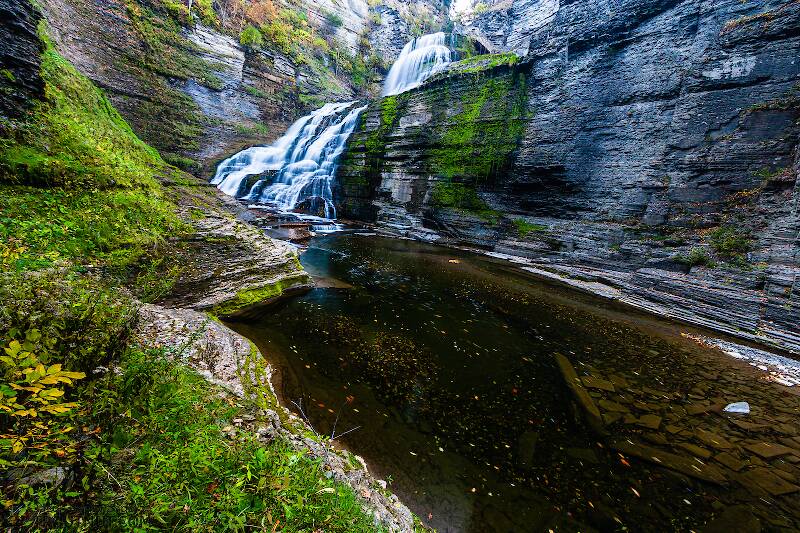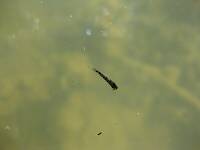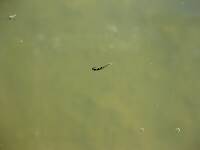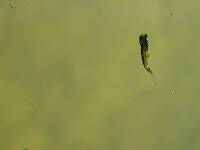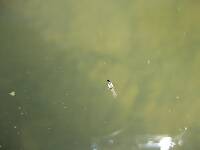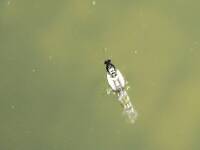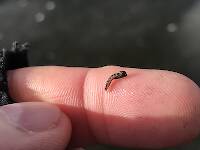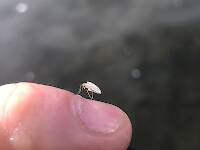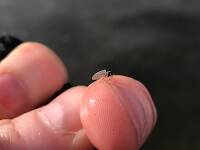
Salmonflies
Pteronarcys californica
The giant Salmonflies of the Western mountains are legendary for their proclivity to elicit consistent dry-fly action and ferocious strikes.
Featured on the forum

Troutnut is a project started in 2003 by salmonid ecologist Jason "Troutnut" Neuswanger to help anglers and
fly tyers unabashedly embrace the entomological side of the sport. Learn more about Troutnut or
support the project for an enhanced experience here.
DSFlyman
Posts: 13
Posts: 13
Taxon on Jan 19, 2009January 19th, 2009, 5:15 pm EST
DSFlyman-
Well, no two flytyers are likely to follow the exact same sequence of steps, but from what I can see of the construction of the fly, if I were to try to exactly duplicate it, as opposed to trying to improve on it, here is the sequence of steps I would probably use:
1) crimp barb
2) place hook in vise
3) tie on barbell eyes
4) tie in strip of mylar on top of hook, winding it with thread back to bend of hook
5) form two dubbing loops, one in front and one in back of mylar
6) dub abdomen with front dubbing loop and tie down
7) pull mylar over abdomen and tie down
8) with back dubbing loop, take several turns behind abdomen, and then wind forward ribbing abdomen
9) dub thorax
10) tie in wing cases
11) tie in a hackle
12) wind several turns of hackle to form legs
13) dub over barbell eye tiedown wraps to form head
14) attach antennae
16) whip finish
17) apply head cement to whip finish wraps
It kind of looks to me like the fly has a shiny head, but without being able to see the fly a lot better, I have no idea how head was constructed. Hope this info is useful to you.
Well, no two flytyers are likely to follow the exact same sequence of steps, but from what I can see of the construction of the fly, if I were to try to exactly duplicate it, as opposed to trying to improve on it, here is the sequence of steps I would probably use:
1) crimp barb
2) place hook in vise
3) tie on barbell eyes
4) tie in strip of mylar on top of hook, winding it with thread back to bend of hook
5) form two dubbing loops, one in front and one in back of mylar
6) dub abdomen with front dubbing loop and tie down
7) pull mylar over abdomen and tie down
8) with back dubbing loop, take several turns behind abdomen, and then wind forward ribbing abdomen
9) dub thorax
10) tie in wing cases
11) tie in a hackle
12) wind several turns of hackle to form legs
13) dub over barbell eye tiedown wraps to form head
14) attach antennae
16) whip finish
17) apply head cement to whip finish wraps
It kind of looks to me like the fly has a shiny head, but without being able to see the fly a lot better, I have no idea how head was constructed. Hope this info is useful to you.
JAD on Jan 20, 2009January 20th, 2009, 5:40 am EST
Good job Taxon
Question for DSFlyman the fly body is it a series of beads with dub over and between or is it some flashy material. Other than that pretty stright forward pupa.
John -JAD
Question for DSFlyman the fly body is it a series of beads with dub over and between or is it some flashy material. Other than that pretty stright forward pupa.
John -JAD
They fasten red (crimson red) wool around a hook, and fix onto the wool two feathers which grow under a cock’s wattles, and which in colour are like wax.
Radcliffe's Fishing from the Earliest Times,
DSFlyman
Posts: 13
Posts: 13
DSFlyman on Jan 21, 2009January 21st, 2009, 4:22 am EST
The body looks to be dubbed normally with a mylar ribbing. That's what I've been experimenting with. I've been using green antron with a splash of Fire-Star Caddis mylar dubbing.
I can't seem to get the wing pads or the hackle right. The fly is so damn small. The head looks like black thread built up.
any suggestions on the hackle/wing pads?
I can't seem to get the wing pads or the hackle right. The fly is so damn small. The head looks like black thread built up.
any suggestions on the hackle/wing pads?
DS Flyman
www.dsflyfishing.com
DSFlyfishing
www.dsflyfishing.com
DSFlyfishing
Taxon on Jan 21, 2009January 21st, 2009, 5:27 am EST
DSFlyman-
Quill wing cases are a bitch to cut to size and attach even in larger sizes. I can only imagine how difficult they might be in tiny sizes.
For tiny black wet hackle, I'd probably use Starling.
Quill wing cases are a bitch to cut to size and attach even in larger sizes. I can only imagine how difficult they might be in tiny sizes.
For tiny black wet hackle, I'd probably use Starling.
Quick Reply
Related Discussions
Topic
Replies
Last Reply

